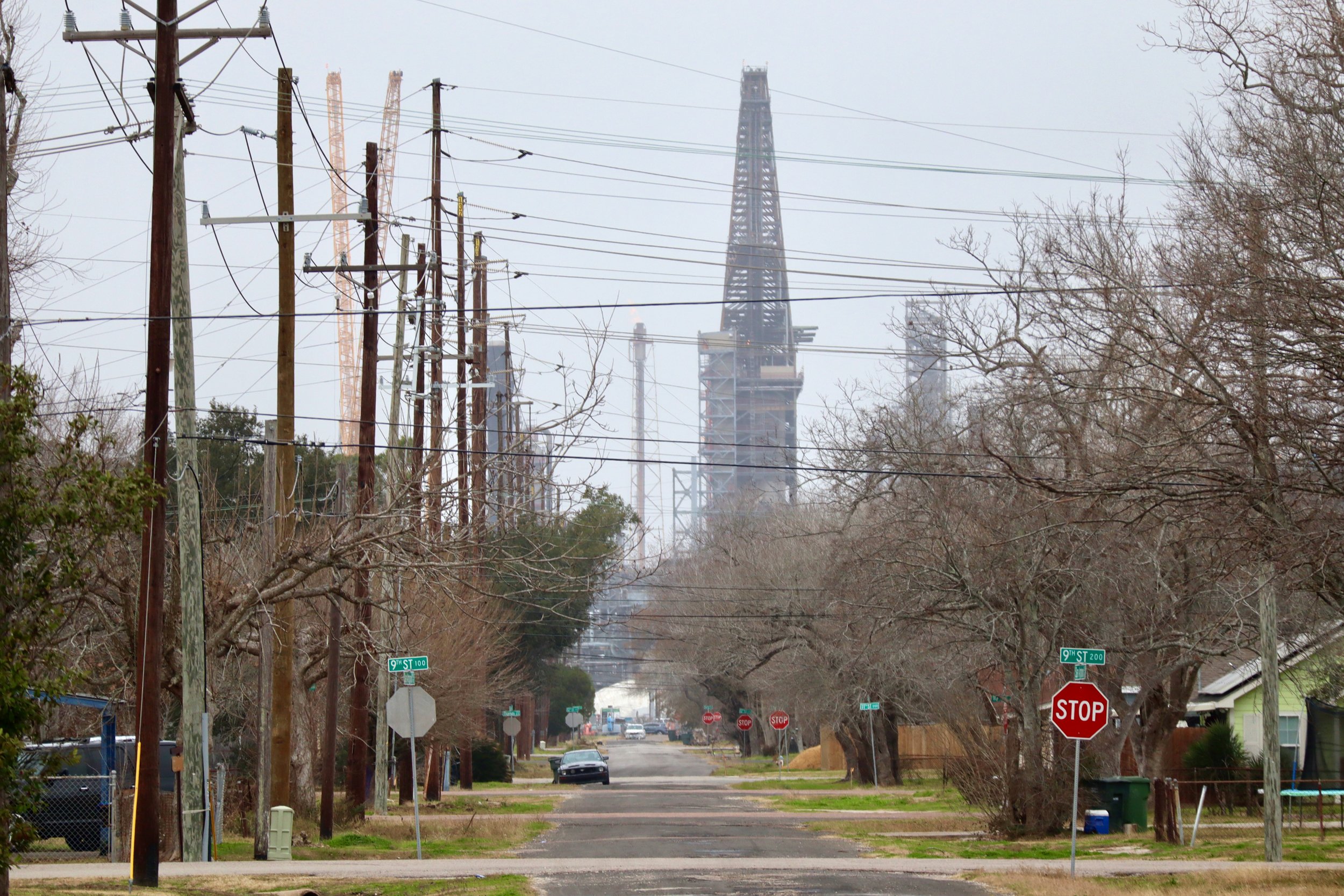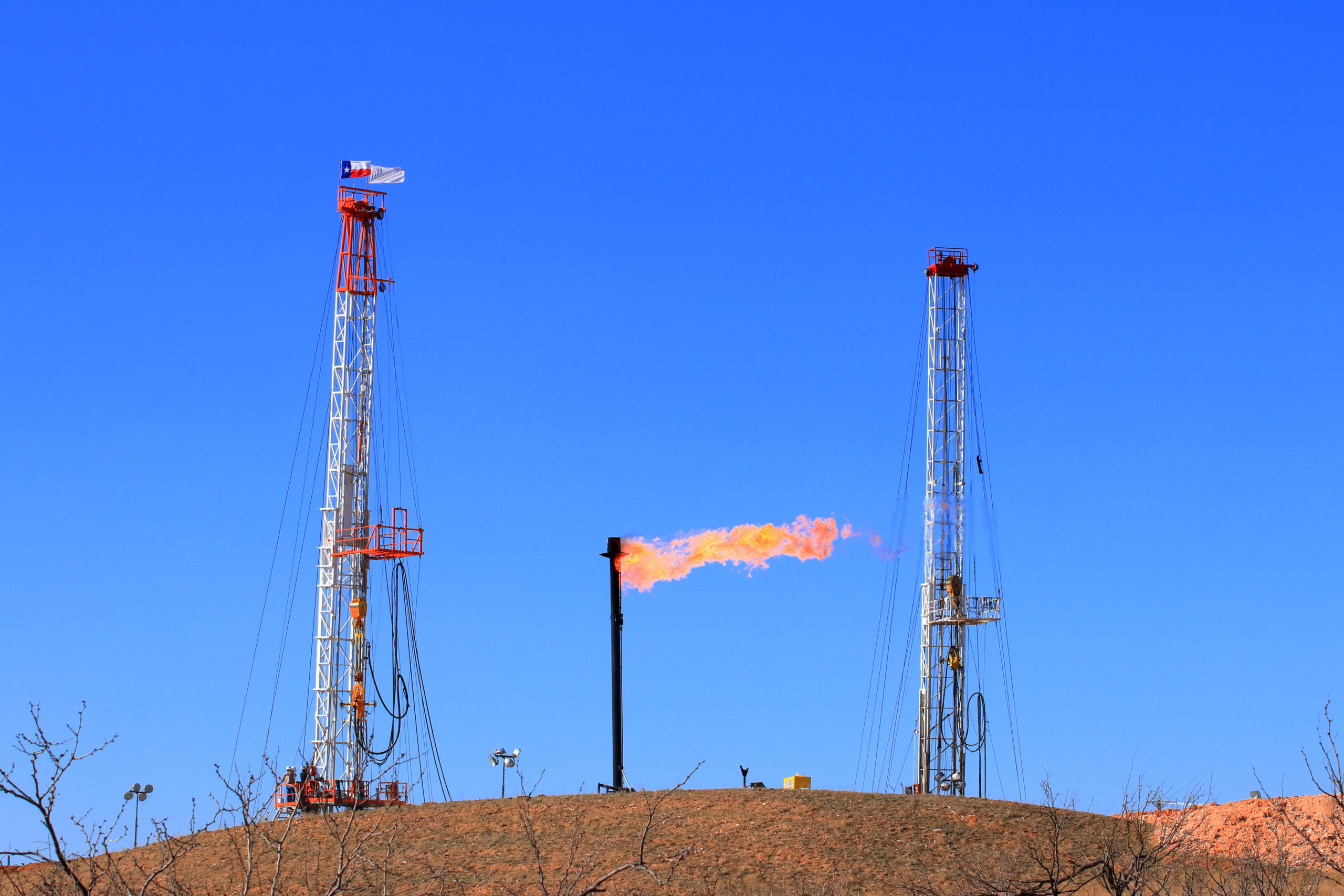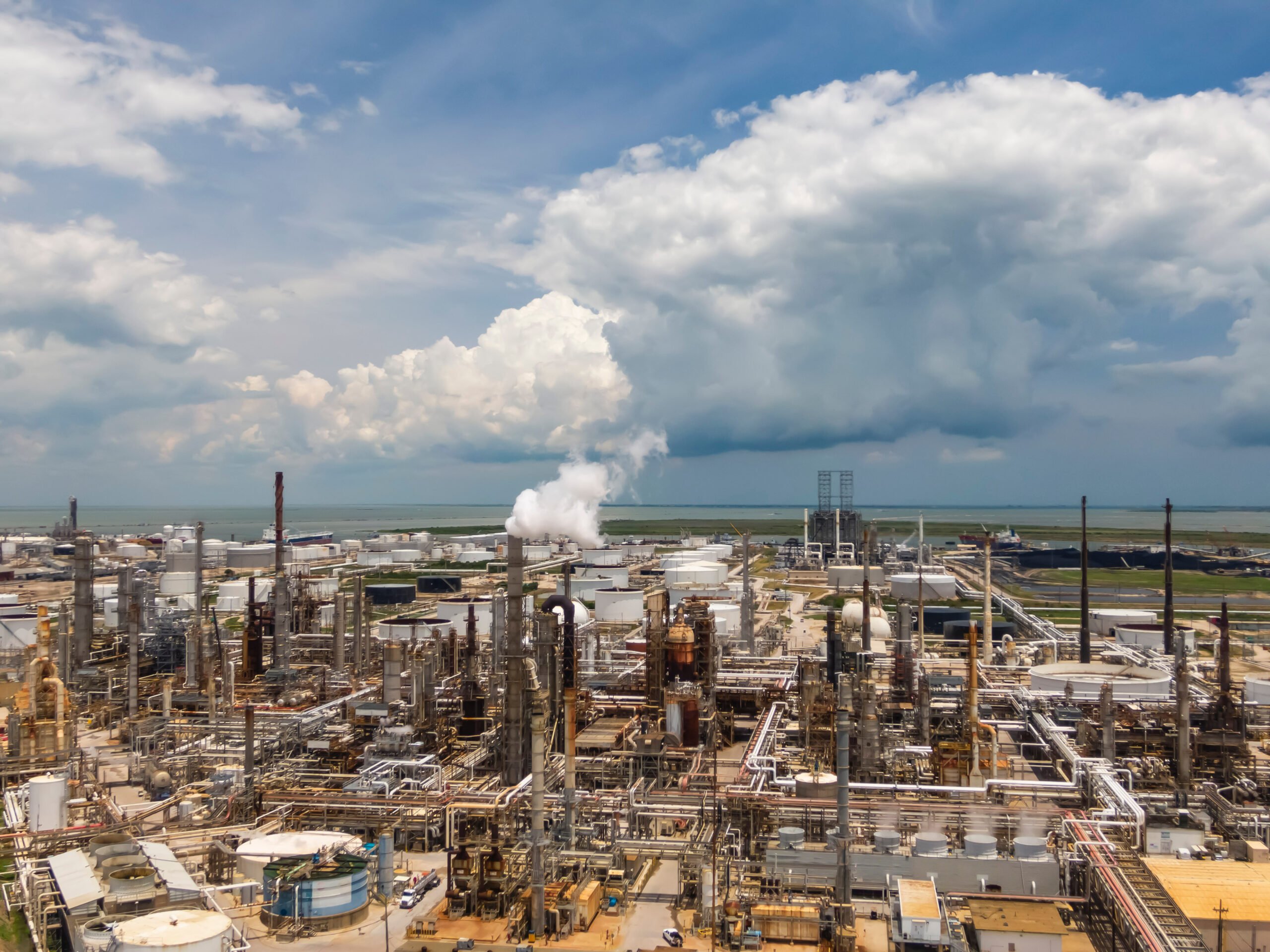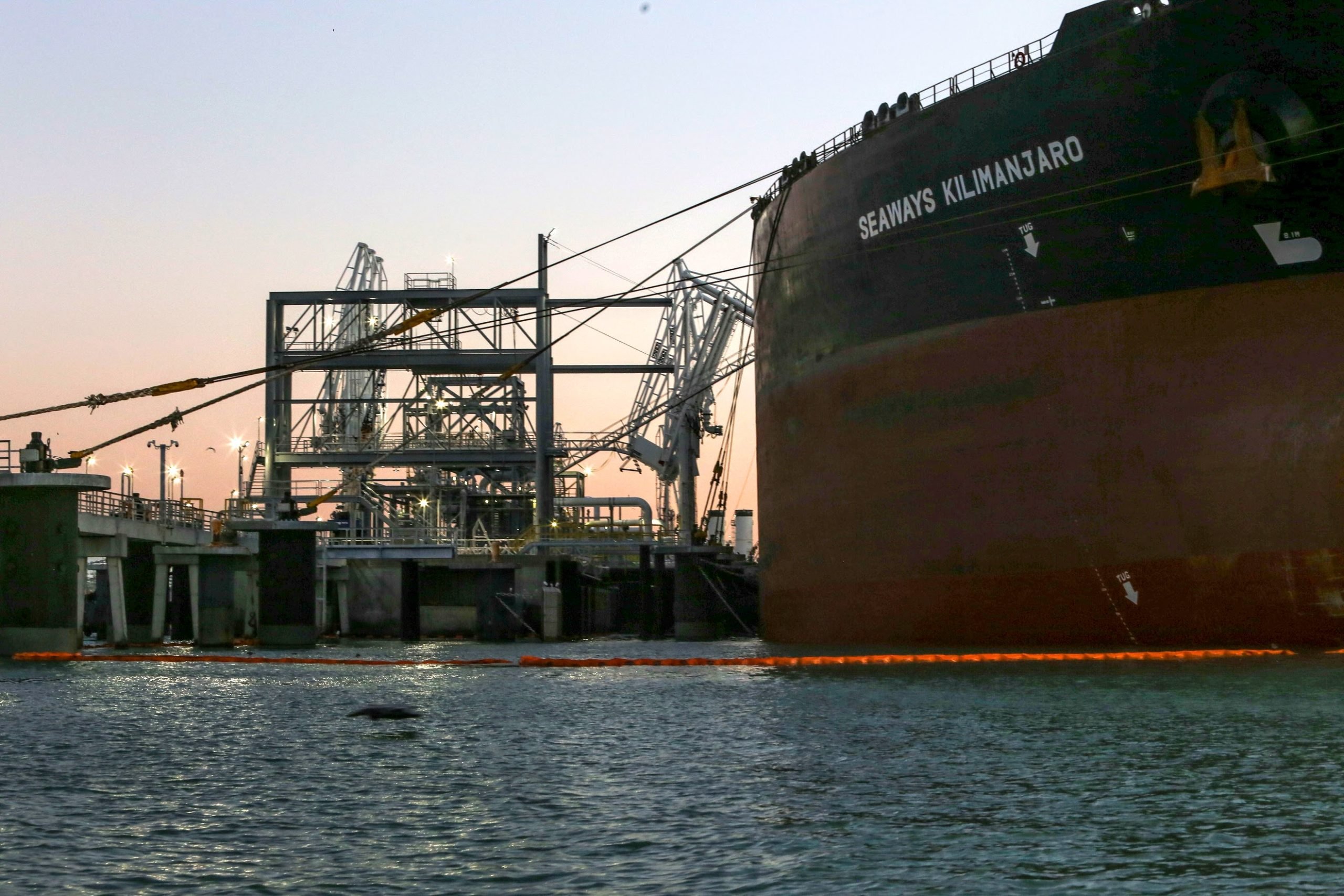
Climate Activists Sit In At Department of Transportation Over Oil Exports
Deepwater terminals in the Gulf would fuel output and growth despite the Biden administration's promises of steep emissions cuts.

This article originally appeared on Inside Climate News, a nonprofit, independent news organization that covers climate, energy and the environment. It is republished with permission. Sign up for their newsletter here.
Four climate activists from Texas and Louisiana were arrested Wednesday morning in Washington after staging a sit-in at the Department of Transportation, which could rule as soon as next week on the first of four proposed offshore oil terminals in the Gulf of Mexico.
The activists say the terminals, designed to expand the nation’s oil export capacity by 6.5 million barrels a day, clash head on with the Biden administration’s aggressive climate goals for reducing greenhouse gas emissions and would enable decades of growth in U.S. fossil fuel production.
“We’re asking President Biden and [Transportation Secretary] Pete Buttigieg to step up and be climate leaders and not approve this oil export project,” said Melanie Oldham, founder of Citizens for Clean Air & Clean Water of Freeport and Brazoria County, who traveled from Texas for the sit-in but was not among those arrested. “We hope they practice what they preach, what they told us in their campaigns.”
“We’re asking President Biden and [Transportation Secretary] Pete Buttigieg to step up and be climate leaders.”
Offshore terminals, 30 miles into the Gulf, would allow the world’s largest tankers to draw oil directly from Texas, where oil exports have surged since Congress lifted an export ban in 2015. Currently, a lack of deepwater access is hampering export growth as output from Texas’ Permian Basin sets records and prices soar, requiring smaller ships to tediously ferry oil from Texas’ coastal depots to larger ships waiting miles offshore.
The four proposed offshore terminals, all in Texas, would significantly increase capacity for the U.S. oil industry, which hit its monthly export record of 3.8 million barrels a day in July.
Last month, the U.S. Environmental Protection Agency quietly issued its first endorsement for one of the projects—the Sea Port Oil Terminal, jointly developed by Enterprise, Enbridge, and Chevron 30 miles off the coast of Freeport. The EPA’s action came after a three-year review that saw robust public opposition.
The Department of Transportation’s Maritime Administration may announce its ruling on the terminal as soon as next week.
The contingent of activists from the Gulf Coast and beyond, some intending to get arrested, saw Wednesday’s sit-in as a last-ditch effort to thwart the project.
“We’re not going to leave until we hear that the Maritime Administration is not going to approve this project,” said Robin Schneider, Austin-based director of Texas Campaign for the Environment, before her arrest on Wednesday morning. By the evening she and others were charged with unlawful entry and released.
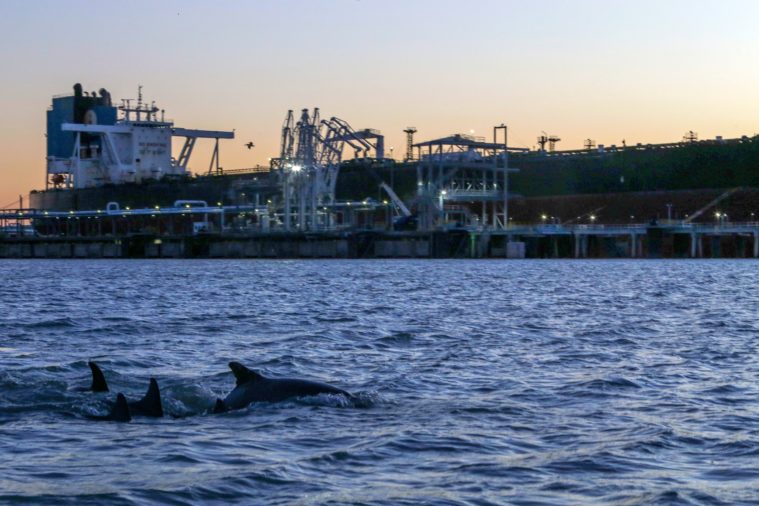
Growing oil production, Schneider said, contradicts commitments trumpeted by Biden and Buttigieg to advance a transition away from fossil fuels.
The maritime administration’s own 890-page impact statement, released in July, said Sea Port Oil Terminal and the oil it would process would create greenhouse gas emissions equal to 233 million tons of carbon dioxide per year (about 4 percent of total 2020 U.S. emissions). Meanwhile, the Biden Administration promises steep emissions reduction in the next seven years.
During three public hearings over three years, Oldham and other Gulf Coast activists asked regulators not to permit the Sea Port terminal near their community. By the end of 2021, more than 40,000 people filed official comments against the project, according to Earthworks, which supported the campaign.
“We’re not going to leave until we hear that the Maritime Administration is not going to approve this project.”
On October 5, Oldham gave a 20-minute PowerPoint presentation to the EPA in Dallas, describing her small city as hemmed in by petroleum projects and overburdened with pollution.
“We were shocked when EPA came out with this statement,” said Oldham, a 63-year-old physical therapist from Freeport. “We just don’t understand.”
Although the EPA’s letter of recommendation is dated October 7, it took a month to appear online, leaving Oldham and other activists to hastily organize a last-minute trip to Washington before a final decision came down.
“I’m not sure why it takes so long for them to post these very significant updates,” said Ethan Buckner, a senior manager at Earthworks, which sponsored some protesters’ travel costs. “We had no knowledge of the recommendation being submitted until last week.”
While the EPA endorsed the Sea Port proposal, it wrote that “more emphasis is needed to ensure that environmental justice and climate change considerations are included in the project for the protection of overburdened communities.”
The maritime administration’s impact statement said consumption of the oil that the offshore terminal hoped to supply by 2025 would generate up to $18 billion in annual “social costs”—global monetary damages associated with emissions’ effects on agricultural productivity, human health, biodiversity loss, extreme weather, and sea level rise.
It also warned of major impacts on coastal water supplies and aquatic ecosystems in the case of a spill.
A spokesperson for Enterprise Products Partners, the proposed terminal’s parent company, declined to comment for this story. EPA and the DOT’s maritime administration did not respond to requests for comment.
The EPA’s approval of the offshore terminal follows its rejection in September of a similar project, the Bluewater Texas terminal offshore from Corpus Christi, in which the agency ordered the project to reduce planned air pollution by 95 percent and reapply.
Support from environmental regulators gives the Sea Port terminal a clear lead in the race to build the first new offshore facility in the Gulf. The only one operating today, Louisiana Offshore Oil Port, was built in the 1970s to import foreign crude but converted its facilities after the U.S. export ban was lifted. It can process up to 150,000 barrels of oil per day, according to the Global Energy Monitor.
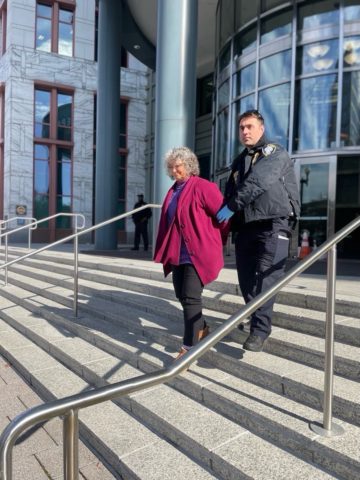
The four new proposed offshore terminals would each have ten times the capacity. They include: the Sea Port Oil Terminal, designed for 2 million barrels per day; Texas Gulf Link, also off the coast of Freeport, designed for 1.1 million barrels per day; Blue Marlin Offshore Port, of off the coast near Houston, designed for 1.9 million barrels per day; and Bluewater Texas off of Corpus Christi, designed for 1.5 million barrels per day.
A slate of new coastal liquified natural gas terminals is also currently proposed between Louisiana and the Rio Grande—a parallel effort to export the other bounty of Texas’ fracking boom, methane gas.
The EPA’s endorsement of the Sea Port terminal said the agency would “pull every lever to achieve tangible progress on equity, environmental justice, and civil rights while providing immediate relief to communities on the ground.”
“Historically, facilities have been sited, have expanded, and have added to the pollution burden in already vulnerable communities,” it said.
The statements ring hollow for Gulf Coast advocates, who spent years telling federal authorities that existing pollution in their communities meant the terminal should be rejected.
“We’re overburdened now,” Oldham said. “It’s like a big chemical soup here.”
For every year since 1992, the EPA has labeled Brazoria County in “severe” or “serious” violation of federal ozone standards.
BASF, the world’s largest chemical producer, operates a 26-plant complex in Freeport. Dow Chemical calls its local site “the largest integrated chemical manufacturing facility in the Western Hemisphere.” (Environment America this year called it the nation’s second-most toxic water polluter and number one in Texas.)
SI Group runs a chemical plant. Phillips 66 refines gasoline outside of town and loads tanker ships with compressed methane at its Freeport LPG terminal. Another gas terminal, Freeport LNG, remains offline since an explosion and fire in June released unspecified amounts of carbon monoxide, nitrous oxide, particulate matter, sulfur dioxide, and volatile organic compounds into Freeport air.
All this in a city of 10,600 people, where non-Hispanic whites account for just 16 percent of the total population, compared with 40 percent in Texas overall, and Hispanics make up 64 percent.
If fossil fuel projects really provided prosperity like public officials often claim, Oldham said, then Freeport would have seen it by now. Instead the small city flanked by big industry sports a 26 percent poverty rate—compared to 14 percent in Texas overall.
“In no way that I know of will it benefit our community,” Oldham said about the proposed offshore terminal. “All it will benefit is Chevron, Enbridge, and Enterprise.”

